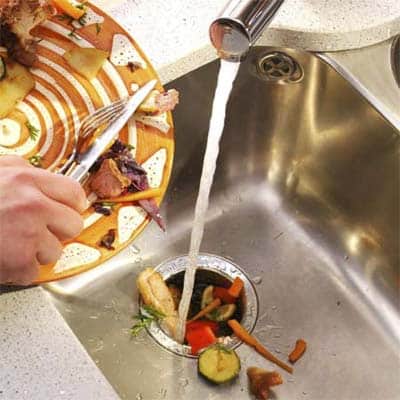Water pollution isn’t a new subject; it has existed since the days when the water has become a natural resource to all.
Coliform is a living bacterium that is found on the earth (soil), in water, or in animal and human wastes. It is a notable figure in every warm-blooded animal and human.
To some, the name “Coliform Bacteria” sounds more like a dangerous disease that can kill with one strike, but coliform bacteria are most likely not to cause illness to the human body.
Is it Common to Have Coliform in Well Water?
They usually find coliforms in any aquatic environment, places where soil and plants live, and they are of no harm. It isn’t strange to find coliform in our well or water systems. It shows the water system is contaminated with sewage or feces and everyone who takes from the well is vulnerable to being infected with diseases.
The ignorance of people sells them into various health issues. That coliforms are by themselves tagged to be “harmless” is an open case describing how vulnerable the water can be too accommodating pathogenic causing diseases.
The presence of coliform bacteria serves as an indicator and a call to action to individuals that the water is vulnerable to pathogens.
Even with their inability to cause damages to our body systems, it is sure a good reason to fight it with every chlorine arsenal we have got because its presence calls in pathogens.
Contaminated water isn’t good for our health; any threat-like appearance in our water system should be corrected as soon as possible before they cause us to be ill. Check out: the average water bill for a one-bedroom apartment.
Coliform can be in three forms, it can be total, fecal, or E. coliform. The presence of a total coliform doesn’t by itself serves as a threat but a closer review of its abilities is proof that other deadly pathogens such as another type of coliform may also be present in the water.
How to Treat Coliform in Well Water
Here are how to treat coliform in well water:
- Step One: Turn off the pumping system before getting started with purification.
- Step Two: Ensure to check for leakages in pipes or caps. If found any, ensure you replace.
- Step Three: Having the exact calculation of what quantity of chlorine is required to purify your well to avoid getting the water damaged. After knowing the exact quantity, pour it down the well.
- Step Four: Circulate the water content to ensure the chlorine mix so well with the water
- Step Five: Leave for a few hours to allow water to settle.
- Step six: Run out the water by pumping it until you can perceive the chlorine from the drained water content.
- Step seven: Leave well for 24hours and afterward flush again to be sure the chlorine content is all gone and you can’t perceive any chlorine content from the flushed water during pumping.
Treating coliform in well waters is as easy as unzipping a zipped dress. It requires a few home practices; it doesn’t require you to break the bank or drop a few sweats before getting it done.
The popular method of treating a well coliform is to add chlorine to it. It is a normal theory of using a simple method to purify the water or making the water system (well or spring) or a simple way of filtering the water system before getting into the home.
Disinfecting water systems is called “Shock chlorination”. It requires the use of chorine or homemade liquid bleach.
Cost to Treat Coliform in Well Water
It cost between $15 to $40 to treat coliform in well water.
The cost of treating coliform well water varies depending on location and environment. There is no fixed price, it isn’t like the grocery store where what you need has a price tag.
Prices mainly depend on where and whom will help chlorinate your well water. If you would have an agency, do it for you. It might come with some extra cost weight compared to having an individual do it for you.
In terms of location, the United Kingdom might own their price tag, which is likely to vary in other places of the world. If you want to know your cost, simply approach whoever you deem fit to help correct your water system.
Will Shocking my Well Get Rid of Coliform?
The best-recorded way to get your well water back to its required purity level is to get it shocked. Therefore, shocking your well will get rid of coliform in the water.
Shocking is the use of homemade bleach to purify the water. Adding chlorine to the water and ensuring it circulates will kill existing pathogens.
Other results can also be attained if individuals are not so careful with the type of content they add to the well water. Adding the required chlorine to the well water is important to get the required result.
After the required content is added, it is expected to wait between the hours of 6-12 to ensure the content added circulates and suffocates the pathogens, after waiting a couple of hours, you flush out so the water can be fully ready to be taken into the body system.
What Causes Coliform in Well Water?
Causes of coliform in well water range from the feces of humans and animals or the improper disposal of sewage. It can also be because of leakages from rusting pipes, a break in the water source, or an unclean reservoir.
Knowing the exact source of contamination can be easy to solve the purification process, but getting rid of coliform directly by shutting down its source can be a tasking issue because there are various ways the well can be contaminated.
Some special precautions might set up a proper sewage system that is far away from the well, ensuring animals are far away from the well or breaking off any link between your well and any form of oil spillage or dirt.
Final Thoughts
Coliforms, though gain no power to cause the body system harm, are still to be tagged harmful because their presence shows the vulnerability of the water system.
Contaminated water requires accurate shocking with chlorine or homemade liquid bleach and left alone for a few hours to kill disease-causing pathogens and restore the purity content of the well.
You shouldn’t need to break the bank to secure an easy way to get your water purity restored.





